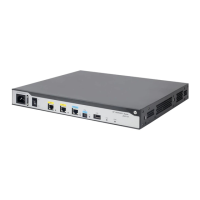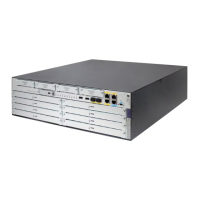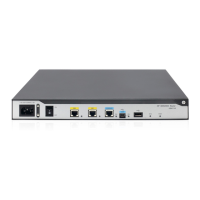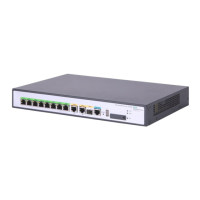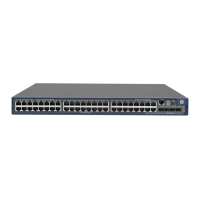51
Display multicast routing entries.
display multicast
[
vpn-instance
vpn-instance-name ]
routing-table
[ source-address [
mask
{ mask-length | mask } ]
| group-address [
mask
{ mask-length | mask
incoming-interface
interface-type interface-number |
outgoing-interface
{
exclude
|
include
|
match
}
interface-type interface-number ] *
Display static multicast routing entries.
display multicast
[
vpn-instance
vpn-instance-name ]
routing-table
static
[ source-address { mask-length | mask } ]
Display RPF information for a multicast
source.
display multicast
[
vpn-instance
vpn-instance-name ]
rpf-info
source-address [ group-address ]
Clear
multicast fast forwarding entries
(centralized devices in standalone mode).
reset multicast
[
vpn-instance
vpn-instance-name ]
fast-forwarding cache
{ { source-address | group-address } * |
all
}
Clear
multicast fast forwarding entries
(distributed devices in standalone
mode/centralized devices in IRF mode).
reset multicast
[
vpn-instance
vpn-instance-name ]
fast-forwarding cache
{ { source-address | group-address } * |
all
} [
slot
slot-number ]
Clear
multicast fast forwarding entries
(distributed devices in IRF mode).
reset multicast
[
vpn-instance
vpn-instance-name ]
fast-forwarding
cache
{ { source-address | group-address } * |
all
} [
chassis
chassis-number
slot
slot-number ]
Clear statistics for multicast forwarding
events.
reset multicast
[
vpn-instance
vpn-instance-name ]
forwarding event
Clear multicast forwarding entries.
reset multicast
[
vpn-instance
vpn-instance-name ]
forwarding-table
{ { source-address [
mask
{ mask-length |
mask } ] | group-address [
mask
{ mask-length | mask } ] |
incoming-interface
{ interface-type interface-number } } * |
all
}
Clear multicast routing entries.
reset multicast
[
vpn-instance
vpn-instance-name ]
routing-table
{ { source-address [
mask
{ mask-length |
mask } ] | group-address [
mask
{ mask-length | mask } ] |
incoming-interface
interface-type interface-number } * |
all
}
NOTE:
•
When you clear a multicast routing entry, the associated multicast forwarding entry is also cleared.
•
When you clear a multicast forwarding entry, the associated multicast routing entry is also cleared.
Configuration examples
Changing an RPF route
Network requirements
As shown in Figure 19:
PIM-DM runs on the network.
All routers on the network support multicast.
Router A, Router B, and Router C run OSPF.
Typically, the receiver host can receive the multicast data from Source through the path: Router
A to Router B, which is the same as the unicast route.
Configure the routers so that the multicast data from Source travels to the receiver along the
following path: Router A to Router C to Router B. This path is different from the unicast route.
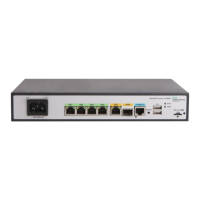
